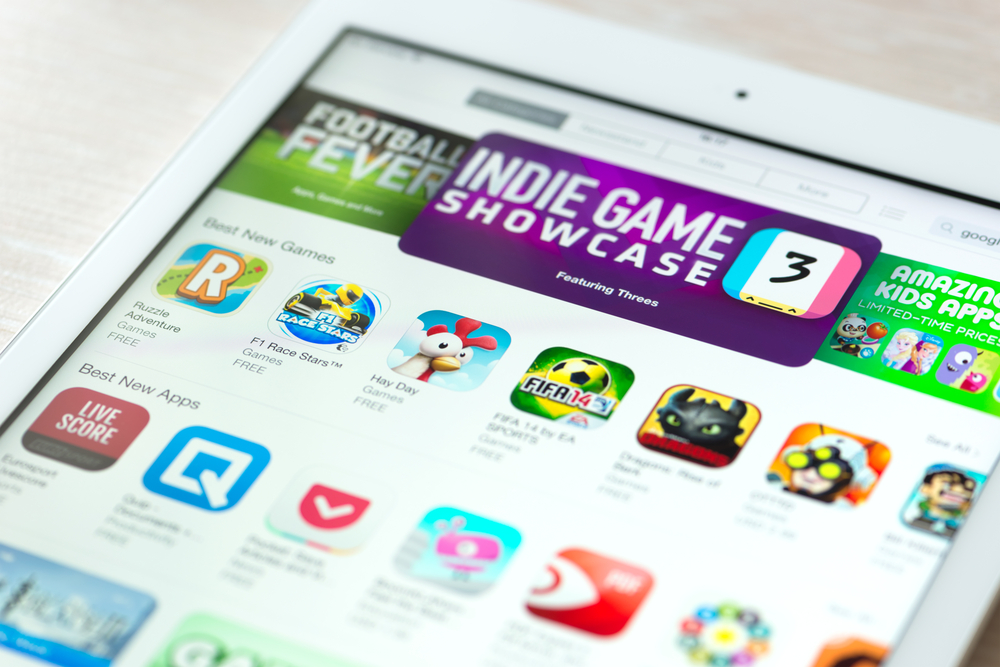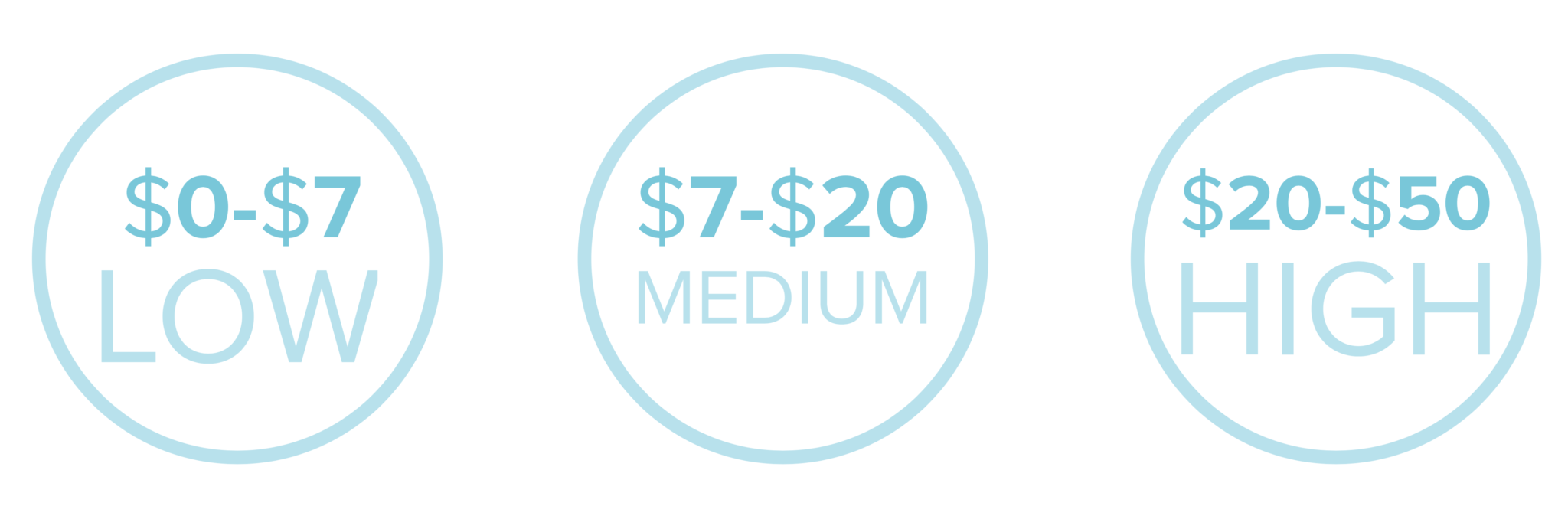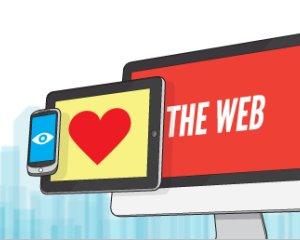[caption id="attachment_124853" align="aligncenter" width="1000"]

App subscription pricing may need to change.[/caption] As the subscription vs. paid
monetization debate staggers along, one company is taking a closer look at when developers should ask users to pay a monthly fee. As it turns out, there’s a bit more nuance to it than you may have imagined.
Liftoff (
via The Verge) analyzed ad data filtered through its service from June 2016 through June 2017. In addition to over 14 million clicks and one billion ad impressions, Liftoff also gathered data from over 45 “key” subscription-based apps and 500,000 app installs. It tracked both iOS and Android, as well as "cost and conversion rates around the key event for subscription apps, namely the subscription." It divvied subscriptions into three categories: low-cost ($0.99 - $7), medium-cost ($7.01 - $20) and high-cost ($20.01 - $50). It also factored the cost per customer acquisition, placing the average cost to acquire a new user at $4.40. The cost associated with getting that user to register and provide their data is $30.51. On average, it costs $161.38 to convert registered users to subscribed ones, and the conversion rate is a low 2.73 percent. This changes a bit when broken down into categories. Games and shopping apps typically use a ‘purchase’ end-game in lieu of subscriptions (coins and such in games; actual goods for shopping apps). While the install price for games and shopping apps is relatively steady ($4.07 and $4.45, respectively), registration cost plummets on games to $8.94 per user. Gamers also have the highest purchase rate at 8 percent, which means they only ‘cost’ $50.69 to get to that point. Shopping apps have a 5.9 percent conversion rate for purchases, leading Liftoff to place the costs at $75.86 per user. [caption id="attachment_142956" align="aligncenter" width="4268"]

Subscription apps pricing model.[/caption]
Sunk-Cost, the Subscription App & Its ‘Sweet Spot’
If you’re not familiar with the sunk-cost fallacy, it’s pretty simple: once a user spends time and money on something (in this case, an app), they tend to keep using it. Having 'sunk' money into it, their cognitive bias tells them to stick with it in order to extract full value. Another theory with app pricing and the subscription model is the ‘sweet spot.’ What should an app cost? What should a
subscription cost? Most people make assumptions and educated guesses about that, and they’re largely wrong. In addition to the three pricing categories, Liftoff also notes that most of us pay for streaming television, music, and movie services via subscriptions. Part of the higher return on television and movies can be attributed to the popularity of services such as Netflix or Hulu (we don’t know if Liftoff appreciated Amazon Prime membership in this mix). Music is also a nearly ubiquitous subscription service. Low- and high-cost subscription apps fare the worst when it comes to conversion percentage and cost-per-conversion. At 1.37 percent and 0.73 percent, respectively, it’s almost not worth the effort. At a cost of $234.14 and $307.96 (respectively) to convert users to subscriptions, it seems prohibitive. But the mid-cost category is wildly off-center from those figures; it has a 7.16 percent conversion rate, and a cost-per-conversion of $106.35. Liftoff notes that high-cost services are “dominated” by dating apps and other apps where the payoff is “off the charts.” So while the cost-per-acquisition is enormous, so is the potential income. Conversely, the lower end of this scale may violate the sunk-cost argument because those apps often seem like there’s no return on the spend. Medium-cost apps might hit the pricing sweet spot, even as they have to thread the needle elsewhere, too:
The data indicates the medium price range may be the sweet spot for subscription apps. Or does it? Keep in mind this outcome is also inextricably intertwined with the kinds of apps (and audiences) that make up this group. It may be that it’s a great t for some apps, but a mismatch with others. If you are going to charge in the middle range make sure there is nothing *average* about how you reach and engage your target audience. It’s a space where competition for users is sure to increase as more apps adopt a subscription model.
Nothing about pricing and subscriptions is easy. Value also invites comparisons. Is your $8/month note-taking app
really as valuable to end-users as Netflix? Unlikely. Liftoff calls the mid-priced apps the “golden middle.” It’s still a wide range, but also indicative of what users are willing to spend for a good, solid service – exactly the definition of a valuable subscription-based app.
 App subscription pricing may need to change.[/caption] As the subscription vs. paid monetization debate staggers along, one company is taking a closer look at when developers should ask users to pay a monthly fee. As it turns out, there’s a bit more nuance to it than you may have imagined. Liftoff (via The Verge) analyzed ad data filtered through its service from June 2016 through June 2017. In addition to over 14 million clicks and one billion ad impressions, Liftoff also gathered data from over 45 “key” subscription-based apps and 500,000 app installs. It tracked both iOS and Android, as well as "cost and conversion rates around the key event for subscription apps, namely the subscription." It divvied subscriptions into three categories: low-cost ($0.99 - $7), medium-cost ($7.01 - $20) and high-cost ($20.01 - $50). It also factored the cost per customer acquisition, placing the average cost to acquire a new user at $4.40. The cost associated with getting that user to register and provide their data is $30.51. On average, it costs $161.38 to convert registered users to subscribed ones, and the conversion rate is a low 2.73 percent. This changes a bit when broken down into categories. Games and shopping apps typically use a ‘purchase’ end-game in lieu of subscriptions (coins and such in games; actual goods for shopping apps). While the install price for games and shopping apps is relatively steady ($4.07 and $4.45, respectively), registration cost plummets on games to $8.94 per user. Gamers also have the highest purchase rate at 8 percent, which means they only ‘cost’ $50.69 to get to that point. Shopping apps have a 5.9 percent conversion rate for purchases, leading Liftoff to place the costs at $75.86 per user. [caption id="attachment_142956" align="aligncenter" width="4268"]
App subscription pricing may need to change.[/caption] As the subscription vs. paid monetization debate staggers along, one company is taking a closer look at when developers should ask users to pay a monthly fee. As it turns out, there’s a bit more nuance to it than you may have imagined. Liftoff (via The Verge) analyzed ad data filtered through its service from June 2016 through June 2017. In addition to over 14 million clicks and one billion ad impressions, Liftoff also gathered data from over 45 “key” subscription-based apps and 500,000 app installs. It tracked both iOS and Android, as well as "cost and conversion rates around the key event for subscription apps, namely the subscription." It divvied subscriptions into three categories: low-cost ($0.99 - $7), medium-cost ($7.01 - $20) and high-cost ($20.01 - $50). It also factored the cost per customer acquisition, placing the average cost to acquire a new user at $4.40. The cost associated with getting that user to register and provide their data is $30.51. On average, it costs $161.38 to convert registered users to subscribed ones, and the conversion rate is a low 2.73 percent. This changes a bit when broken down into categories. Games and shopping apps typically use a ‘purchase’ end-game in lieu of subscriptions (coins and such in games; actual goods for shopping apps). While the install price for games and shopping apps is relatively steady ($4.07 and $4.45, respectively), registration cost plummets on games to $8.94 per user. Gamers also have the highest purchase rate at 8 percent, which means they only ‘cost’ $50.69 to get to that point. Shopping apps have a 5.9 percent conversion rate for purchases, leading Liftoff to place the costs at $75.86 per user. [caption id="attachment_142956" align="aligncenter" width="4268"]  Subscription apps pricing model.[/caption]
Subscription apps pricing model.[/caption]


